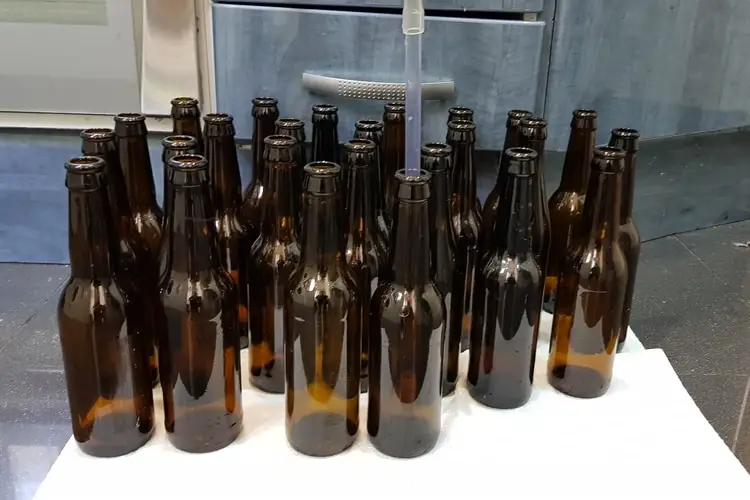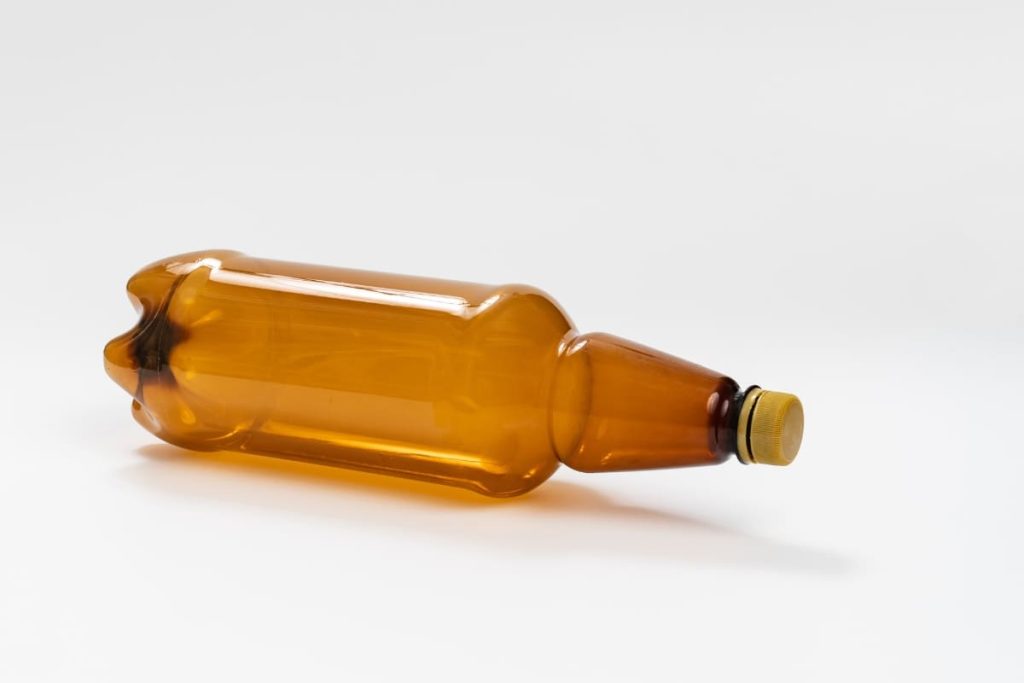New devices appear every day in homebrewing. For years, decades, it was bottles or soda kegs. Now, Mr. Beer, one of the most popular beginner kits, is providing PET (plastic) bottles.
Homebrew beer can be put in PET bottles and usually, it will not affect the flavor at all. Strong beer could affect the plastic, especially acidic beer. O2 could get through and material leach could affect beer’s taste. Small chances, fair warning.
PET stands for Polyethylene Terephthalate. Yes, most plastics are by-products of petroleum. Even so, while petroleum production exists, the polyester resins derived therein are useful and would otherwise be discarded.
The PROS of bottling in PET
PET is the affectionate name we use for plastic bottles with the recycle designation – #1.
- They are lighter and cheaper than glass.
- They are 30% lighter than a decade ago.
- Increasing amounts are produced using repurposed plastic.
- PET is more durable than glass.
- PET is 20 times lighter and less than ½ the price of glass bottles.
- PET may be reintroduced back into new materials up to 10 times
- Resistant to impact, moisture, alcohol, and solvents.
No products found.
The CONS of bottling in PET
- It could react with the contents. (though in a parts per billion capacity)
- Eventually, it could react with O2. It is best to consume beers within a 2-month window.
* It is possible to bottle in a thicker, specialty plastic, one containing a layer of polyvinyl sandwiched between the PET to reduce oxygen risk. - Glass is more viscous than plastic. It contains the contents without releasing any component materials.
- Material leach could affect beer’s taste.
- Cannot be cleaned in an automatic dishwasher.
Is it environmentally responsible?
Post-consumer PET bottles are processed through a series of special washing and chemical processes to break down the PET into its raw materials.
They process these components further to make recycled PET (rPET) flakes.

rPET flakes are used in myriad ways, including:
- Clothing and household items
- Food and chemical containers
- You name it, it is here!
The Reality of PET handling
This is the reality. For decades in the US, these recycling trucks picked up your carefully sorted plastic items and sent it to the dump, or to landfills in China.
Now the US uses only about 9% or recycled plastic in its new PET containers.
Interestingly, landfilling PET in the US has changed. It is placed in storage cells. After 20 years time, it will be mined and reused as needed.
PET vs glass bottles

So, will it be PET or glass?
Glass overall is free, if we recycle. There is plenty of good glass getting thrown away at every bar you see. Make friends with the bartender and he’ll keep your bottles of choice.
Even so, PET is cheap and effective. If you haven’t ready access to a taproom or forego this route, then PET may be an option.
Can you reuse pet bottles for homebrew? How many times?
You could reuse the PET bottles.
There are thicker and thinner ones available.
The pint bottles listed above are durable and thicker than soda bottles.
They may also have an O2 barrier inside, check with your supplier.
As long as the bottles are cleaned immediately after use, and not scratching or abrading the inside or on the threads, they could be reused several times.
Make sure there are new caps each time.
One mistake made is to reuse caps and try to seal them over broken or scored threads.
How do you clean PET bottles at homebrew?
Clean your PET bottles exactly like cleaning glass.
Use a sanitizer of choice, and submerse or fill the bottles completely and let them soak.
Let them sit for the required time and then double the length of time, just to make sure.
Use a beer brush and scrub out the inside.
Plastic bristles should not affect the interior finish.
However, do be aware that the metal handle of old-style bottle brushes could scuff up the interior neck of the bottle.
Once scratched, it could likely not be properly sanitized again.
There are some no-rinse sanitizers but most utilized for homebrew must be rinsed well.
Tip: Using 1 PET bottle to test carbonation
Here is one novel idea I’ve come across, though I’ve not tried it myself.
Some self-titled enterprising homebrewers package in glass as usual and also use a single PET bottle. The idea is that they can monitor carbonation progress due to the firmness of the bottle.
Hmmmm…after 2 weeks the PET bottle is rock hard and what man doesn’t want that, a beer ready to drink.
However, this is misleading.
The gas in the bottle, while carbonating, will try to come out of solution at room temp, thereby making the bottle artificially turgid.
If you chill the bottle, the water molecules will shrink, and the liquid will reabsorb the CO2, and you have a semi-rigid bottle.
A hard bottle is a semi-accurate measure of bubbles, at best.
Sorry folks, this one may not hold up under the scrutiny of science.
Experiment before going all in
There are mixed reviews within the forums on whether PET bottling is effective.
Most of the issues seem to be regarding carbonation, whether loose caps or other.
One note about this.
Use a bottling bucket and mix the dissolved priming sugar into the entire batch of beer. Gently stir about every 6 bottles to keep the raw sugar well-mixed. This should solve any uneven carbonation problems.
Try PET bottles and see.
It is better if there is a 2 – 3 gallon experiment before throwing out all the glass and kegs.
They are safe, light, and resilient.
We will see more and more of these in the future.
Last update on 2024-10-10 / Affiliate links / Images from Amazon Product Advertising API

